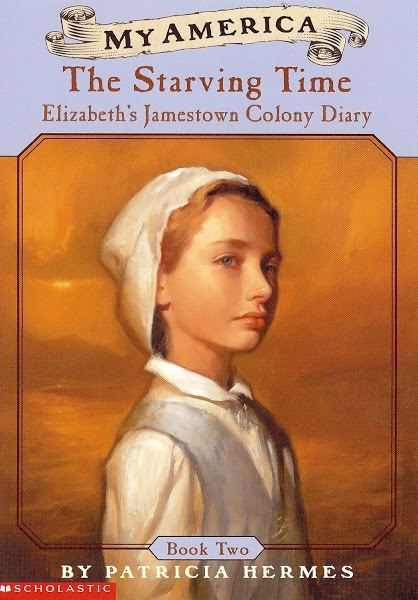Name Temperance Flowerdew | ||
 | ||
Died December 1628, Jamestown, Virginia, United States | ||
Temperance Flowerdew (1590 – 1628) was an early settler of the Jamestown Colony and a key member of the Flowerdew family, significant participants in the history of Jamestown. Temperance Flowerdew was wife of two Governors of Virginia, sister of another early colonist, aunt to a representative at the first General Assembly and "cousin-german" (first cousin) to the Secretary to the Colony.
Contents
- Origins and first marriage
- Tempestuous sea voyage
- Arrival in Jamestown
- Marriage to George Yeardley
- Witness to John Rolfes will
- Flowerdew Hundred
- Marriage to Francis West death
- References
Flowerdew was one of the few survivors of the brutal winter of 1609–10, known as the "Starving Time", which killed almost ninety percent of Jamestown's inhabitants. Later, upon the death of her second husband, George Yeardley, Flowerdew became one of the wealthiest women in Virginia. Upon her death, the estate was transferred to her children despite the efforts of her third husband to claim it. She appears on the periphery of many historical events that occurred during the period.
Origins and first marriage
Temperance Flowerdew was the daughter of Anthony Flowerdew, of Hethersett, Norfolk, and his wife Martha Stanley, of Scottow, County Norfolk. She married Richard Barrow on April 29, 1609 at St Gregory by St Paul's, London.
Tempestuous sea voyage
Now Mrs Barrow, she sailed for Jamestown aboard the Falcon, commanded by Captain John Martin, in May 1609 in a convoy of nine ships as part of the Virginia Company of London's Third Supply Mission. Whether she was accompanied by her husband is not of record. The flagship of the convoy, the Sea Venture, had the new leaders for Jamestown aboard, including George Yeardley. During the trip, the convoy encountered a severe storm which was quite likely a hurricane. The Sea Venture became separated from the rest of the convoy, ultimately coming aground on the island of Bermuda, where it was stranded for months. The Falcon continued on, reaching Jamestown in August 1609.
Arrival in Jamestown
Temperance Barrow arrived in Jamestown just before the winter of the Starving Time, an extraordinarily harsh winter which the majority of townspeople did not survive. As provisions grew scarce, some thirty colonists tried to steal corn from Powhatan, but most of the men were slain during the attempt, only two escaping. The "common stores that should have kept all of the colonists through the winter" were instead "severely reduced by Indian raids and consumed by the commanders". The colonists subsisted on roots, herbs, acorns, berries, and fish. By the end of the winter, the five hundred English who had been left in Virginia only numbered about sixty.
In May 1610, the survivors of the Sea Venture finally arrived, in two smaller ships constructed from its wreckage. The newcomers were "shocked to discover the state of the colony". Sir Thomas Gates took control as the new Lieutenant-Governor and decided to abandon the town. They loaded the survivors on the ships and headed down river. The next morning, they encountered a long-boat with dispatches from Lord De La Warr. He had just arrived with three ships, loaded with supplies for Jamestown. They all returned up the river, back to Jamestown, on the same day, and Lord De La Warr arrived two days later.
Marriage to George Yeardley
By 1618, Richard Barrow had died, and Temperance married George Yeardley. The couple had three children, Elizabeth (c. 1614), Argoll (1618) and Francis (1623).
George Yeardley was appointed Deputy Governor by Sir Thomas Dale in April 1616. Deputy-Governor Yeardley secured a peace with the Chickahominy Tribe that made it possible for the colonists to trade with them and live in peace for the next two years. Yeardley's term ended in 1617. When the Yeardleys returned to England in 1617, Yeardley was knighted by King James I and appointed Governor of Virginia. George Yeardley remained Governor until 1621.
Witness to John Rolfe's will
In 1622, Temperance Yeardley witnessed the will of John Rolfe, a fellow native of Norfolk. The other witnesses were Richard Buck (also from Norfolk) John Cartwright, Robert Davie, and John Milwards.
Flowerdew Hundred
Following his appointment as Governor, Yeardley received a patent grant (now lost) of 1,000 acres (4.0 km2), known as Flowerdew Hundred Plantation. There are conflicting stories regarding the naming of this land. It may have been named by the previous owner, Temperance's brother Stanley Flowerdew, or it may have been named by Yeardley in honor of his wife's wealthy father. The second possibility is perhaps more likely, since Yeardley named another plantation after his wife's equally wealthy mother. Among their many crops, the Yeardleys grew tobacco which they then sent to England to sell. There is doubt whether the Yeardleys ever lived at Flowerdew Hundred, however. In the 1624/5 Muster, the family was shown as living in Jamestown.
In 1624, Yeardley sold Flowerdew Hundred to Abraham Piersey, and the deed from that sale is said to be the oldest in America.
Marriage to Francis West; death
Yeardley died on November 13, 1627. On March 31, 1628, Flowerdew married his successor, Governor Francis West.
Flowerdew died in December of the same year, leaving her three children, aged 5, 10, and 14, as orphans. Upon her death, the estate she had inherited from Yeardley was divided among their three children. George Yeardley's brother, Ralph Yeardley, became trustee for the property. Governor West went to London to contest the will, but failed in the effort.
